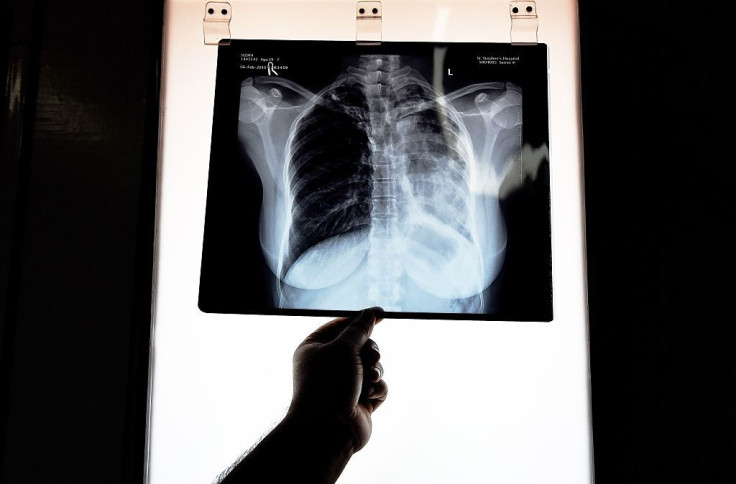Adult Onset Asthma Is Not A Myth; Experts Hard At Work To Find Relief For Older Sufferers

Like the Loch Ness Monster and leprechauns, adult onset asthma isn’t something people believe in. It’s a long-term disease children develop and deal with into adulthood, but getting a first-ever attack in your 30s? Nope.
That’s what the traditional narrative suggests, anyway. But in the past 10 to 15 years, studies have found that adults don’t need a prior history of the condition in order to exhibit its symptoms; it can be induced by allergens, exercise, and eczema. Dr. Suzette Garofano, a pulmonologist at the NYU Langone Medical Center in New York City, told Medical Daily that the overall incidence rate has been stable at about 7 percent, but she’s personally seen more adult cases crop up in her own practice — women in particular seem to be more affected than men, whereas childhood asthma affects more young boys. In the United Kingdom, one in six cases of adult asthma occurs in baby boomers.
That said, there aren’t any firm statistics to share yet, according to Garofano. This could be because women remain underrepresented in clinical trials, which means researchers are unable to glean sex-specific prevention and treatment methods. It could also have to do with the fact that asthma hasn’t been seen as a sexy topic. Garofano actually called it boring.
The good news is that this attitude has changed and asthma has become an exciting field of research. Experts have a renewed focus on the disease and are working to come up with hard facts to help adult sufferers get treated like, well, adults, instead of being written off for some supposedly mythical condition. Here’s what we know so far.
Risk Factors
When doctors check for asthma, they look at how well a person’s lungs work and if there’s a history of allergies. While allergies can increase risk for childhood and adult asthma, they’re less frequently the cause of adult cases, Garofano said. Obesity, exposure to certain workplace materials, and hormonal fluctuations have so far proven more prominent risk factors.
Mechanically speaking, excess weight compresses the lungs and strains respiratory muscles, Garofano said, but the risk from obesity may also have to do with the leptin and adiponectin hormones secreted by fat cells. Fat cells also produce bioactive peptides called adipokines, which have been implicated in malignant lung cancer cases.
Outside of fat, a 2015 study published in The Journal of Allergy and Clinical Immunology found asthma and respiratory symptoms increased in postmenopausal women — a stage in life when the female sex hormone estrogen fluctuates. The exact reason why remains unknown.
What experts do know, Garofano said, is that adult asthma is more difficult to treat — and more persistent. This means it’s less likely to be resolved, whereas childhood asthma can disappear or at least diminish in severity once children hit puberty.
Treatment
Coughing, chest tightness, wheezing, and trouble breathing are all signs of an asthma attack, which occurs when airways shrink and lungs swell so less air gets in and out. Inhalers that relax the inflammation are the main treatment, but adults don’t respond as well to them as children do, possibly because they tend to have worse lung function.
This could also be because adults are bad with inhalers, Garofano said; they’re less coordinated than children and struggle more to breathe in the medicine. Spacers help to make it easier, but if adults aren’t taught the proper technique they can risk death, she added.
Treatment also depends on the severity of the attack. The Mayo Clinic reports that two to six puffs of a quick-acting inhaler can get air back into the lungs, but more severe symptoms may require both an inhaler and a trip to the doctor or urgent care. There are pills patients can take orally to reduce lung inflammation and help get asthma under control, as well as nebulizers for those who just can’t get the hang of an inhaler — these turn medication into a mist that’s easier to inhale deep into the lungs. Regardless, children and adults should devise an asthma action plan with their doctors.
Lifestyle
The Asthma and Allergy Foundation of America says adults with asthma can expect to lead a normal lifestyle. Doing so starts with learning more about the condition — starting with its existence — and the latest developments in research. If allergies are to blame, then there are steps people can take to clean their homes, Garofano said, such as replacing down pillows and comforters and staying vigilant against dust and mold.
The next step is to get the condition under control; doctors can suggest treatments and any necessary lifestyle changes to soothe symptoms. The asthma and allergy foundation recommends seeing a specialist if the condition doesn’t improve within three to six months. That could be a pulmonologist like Garofano, or an allergist or immunologist who is trained and certified to treat asthma.
So much has changed in the last couple decades, and seeking care for asthma-like symptoms is prudent, Garofano said — no matter what age you are.



























